
2025
5 March 2025
New feature: Map View
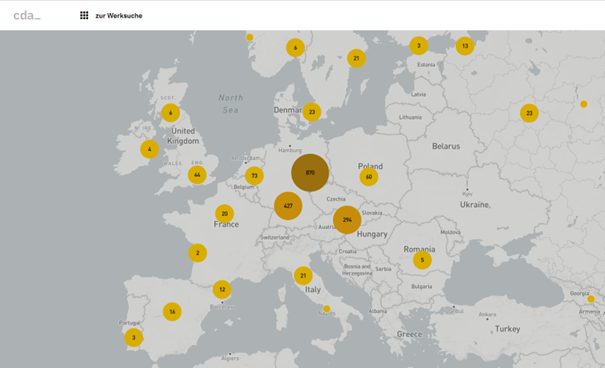
Where to see the work of Cranach around the world. The Cranach Digital Archive now offers the opportunity to find out using an interactive map. This new geographical search and filter option provides a different (and engaging) way to access an artistic oeuvre that is preserved in museums, castles, archives, galleries and churches across the globe.
2024
18 October 2024
Cranach in Basel 1974. Review and Outlook after 50 years
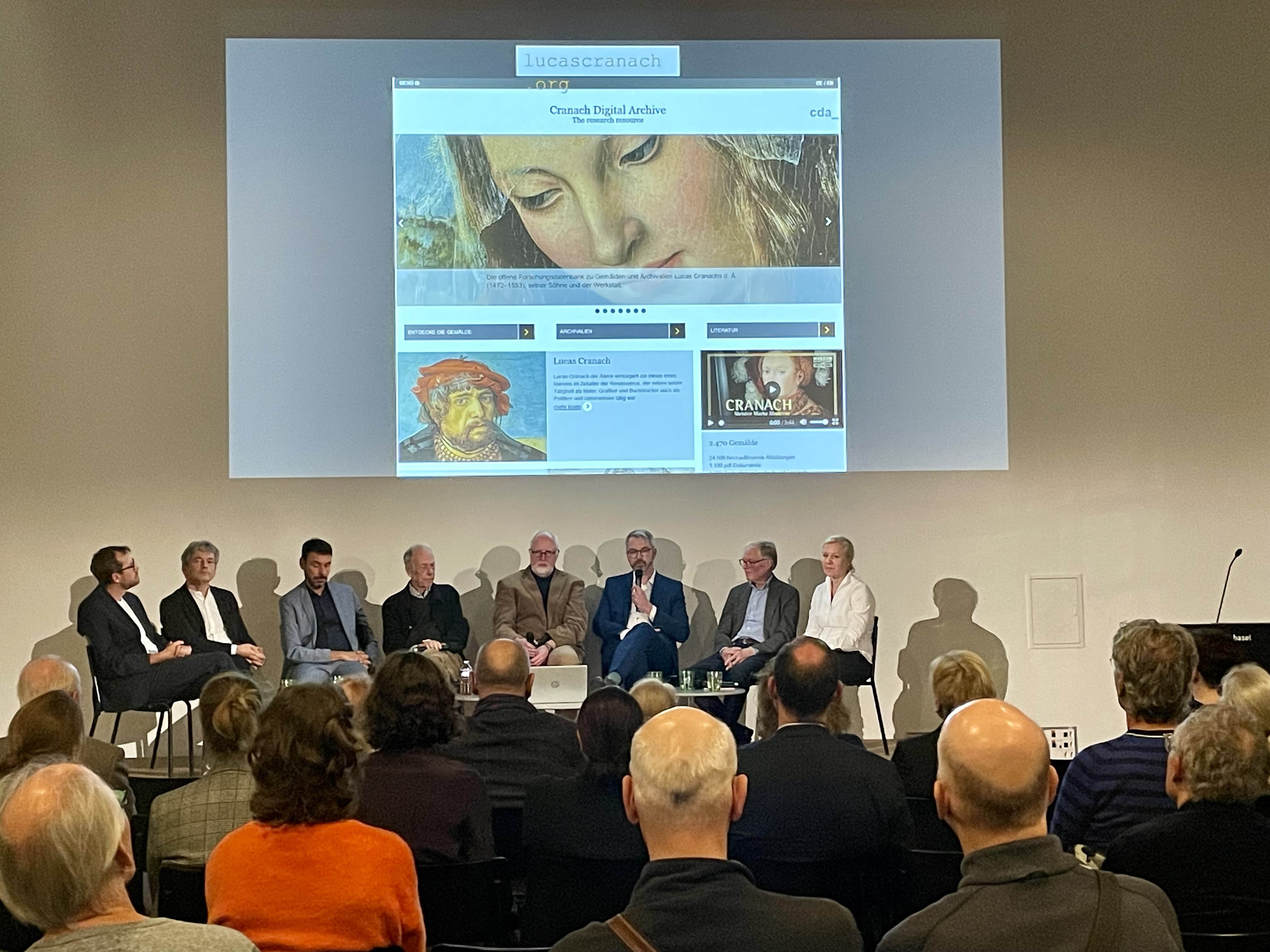
Almost 50 years ago, on 15 June 1974, an exhibition opened at the Kunstmuseum Basel that made history and whose impact can still be felt today: Lukas Cranach. Gemälde, Zeichnungen, Druckgraphik. Against all expectations the exhibition dedicated to one of the most influential painters of the German Renaissance can now be considered the first ‘blockbuster’. It has inspired countless museum directors to start their own Cranach projects. The exhibition was curated by two of the museum's long-serving employees, Dieter Koepplin and Tilman Falk.
On 4 October 2024 a panel discussion at the Kunstmuseum Basel recalled this event from various perspectives, considering not only the exhibition’s impact, but also addressing the future of Cranach research. Three questions formed the basis of the discussion: What was it like in 1974? (Lukas Gloor and Dieter Koepplin) What has happened since? (Daniel Görres, Gunnar Heydenreich and Guido Messling) What is happening now? (Daniel Görres, Mailena Mallach and Manuel Teget-Welz). The discussion was chaired by Bodo Brinkmann.
27 May 2024
A further 100 paintings, 47 archival documents and more advanced features
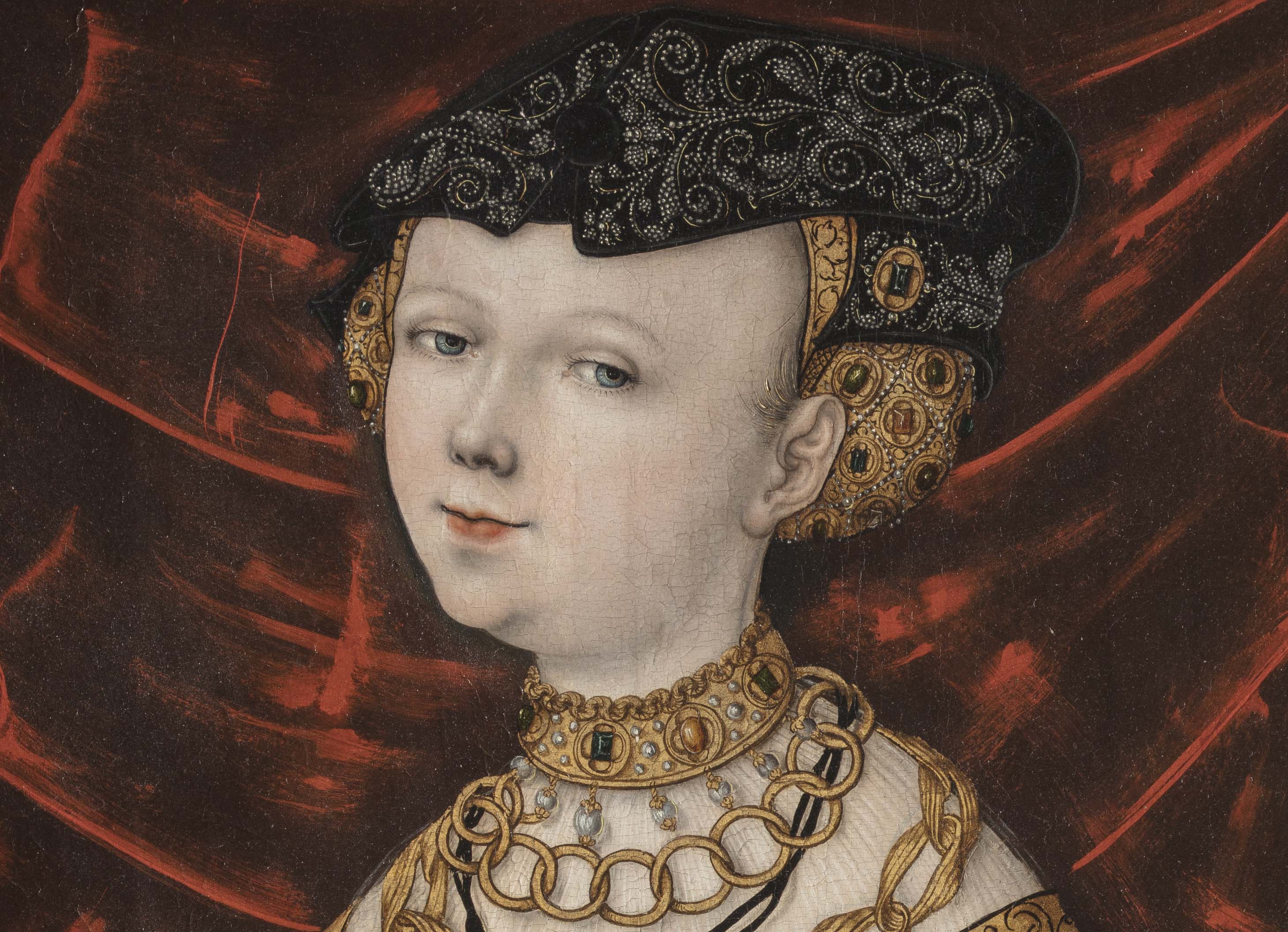
Another 100 paintings have been added to the Cranach Digital Archive with information in text and images. The archive currently provides detailed information on 2,570 paintings from 360 institutions and private collections.
In addition, Dr. Monika Lücke and Dietrich Lücke have transcribed and digitized a further 47 archival documents.
New technical developments make the cda website easier to navigate, for example the use of thumbnails to give users a quick overview of artworks consisting of more than one part.
2023
17 November 2023
New book: Critical Catalogue of Luther Portraits (1519–1530)
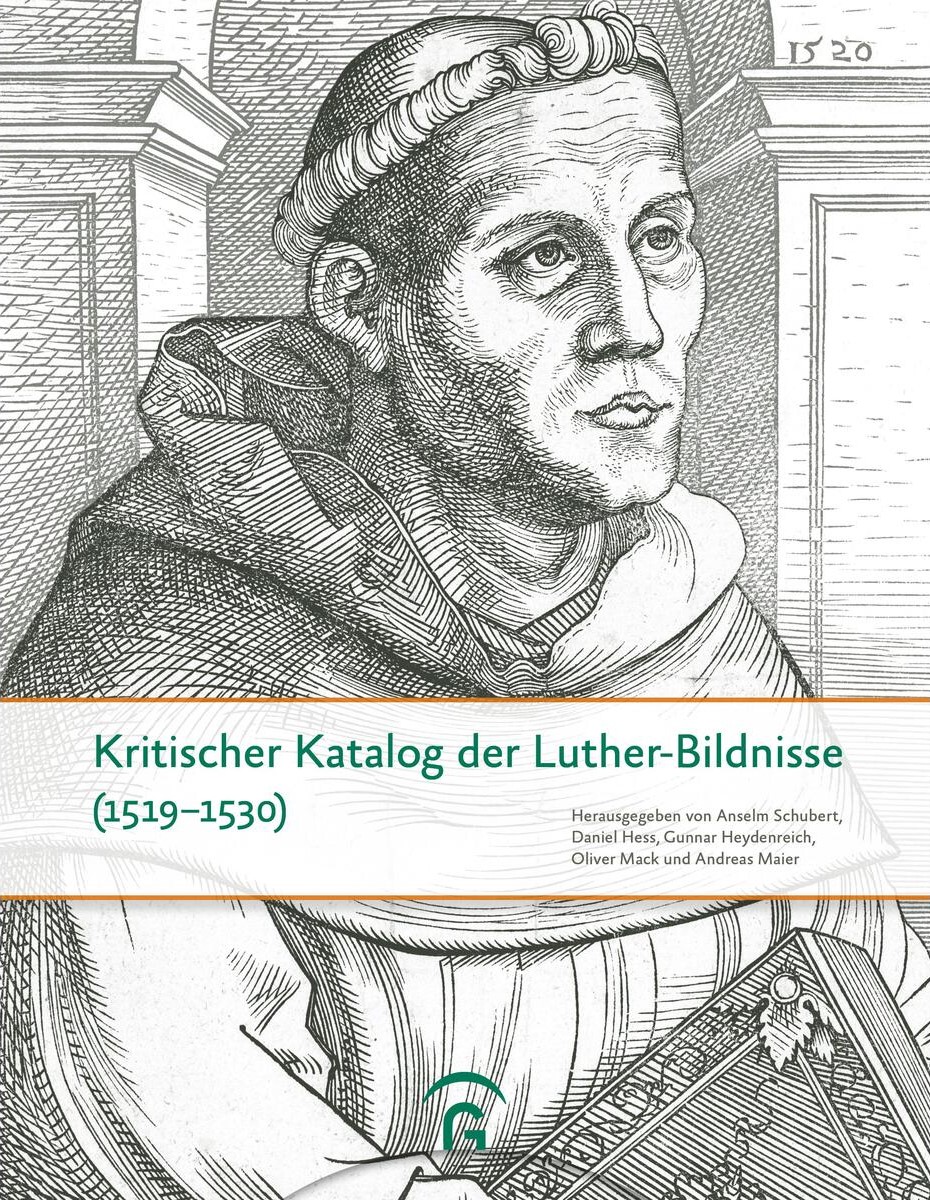
Cover of new book "Critical Catalogue of Luther Portraits (1519–1530)", Gütersloher Verlagshaus, Gütersloh 2023
The Critical Catalogue of Luther Portraits (1519–1530) is the first comprehensive survey of painted and printed portraits of Martin Luther from the early Reformation period. Based on broader interdisciplinary art historical research and using newly developed methods of pattern recognition, the Critical Catalogue was able to discover new archival sources on the Luther portraits, contextualize well-known and lesser-known portraits within the history of art and the Reformation and reattribute individual works.
In May 2022 the results of the Critical Catalogue were published online as part of the Cranach Digital Archive, and more recently a printed version of the Critical Catalogue was published in the series Quellen und Forschungen zur Reformationsgeschichte.
Anselm Schubert, Daniel Hess, Gunnar Heydenreich, Oliver Mack, Andreas Maier (eds.)
Kritischer Katalog der Luther-Bildnisse (1519–1530)
With contributions by Daniel Görres, Amalie Hänsch, Thomas Klinke, Wibke Ottweiler, Aline Sindel
Quellen und Forschungen zur Reformationsgeschichte, Vol. 104
Gütersloher Verlagshaus
Hardcover, 400 pages, 21,0 x 27,0 cm
ISBN: 978-3-579-05987-7
To Publisher's website (German)
14 June 2023
New Project Phase: prints and drawings by Lucas Cranach the Elder, his sons and the workshop
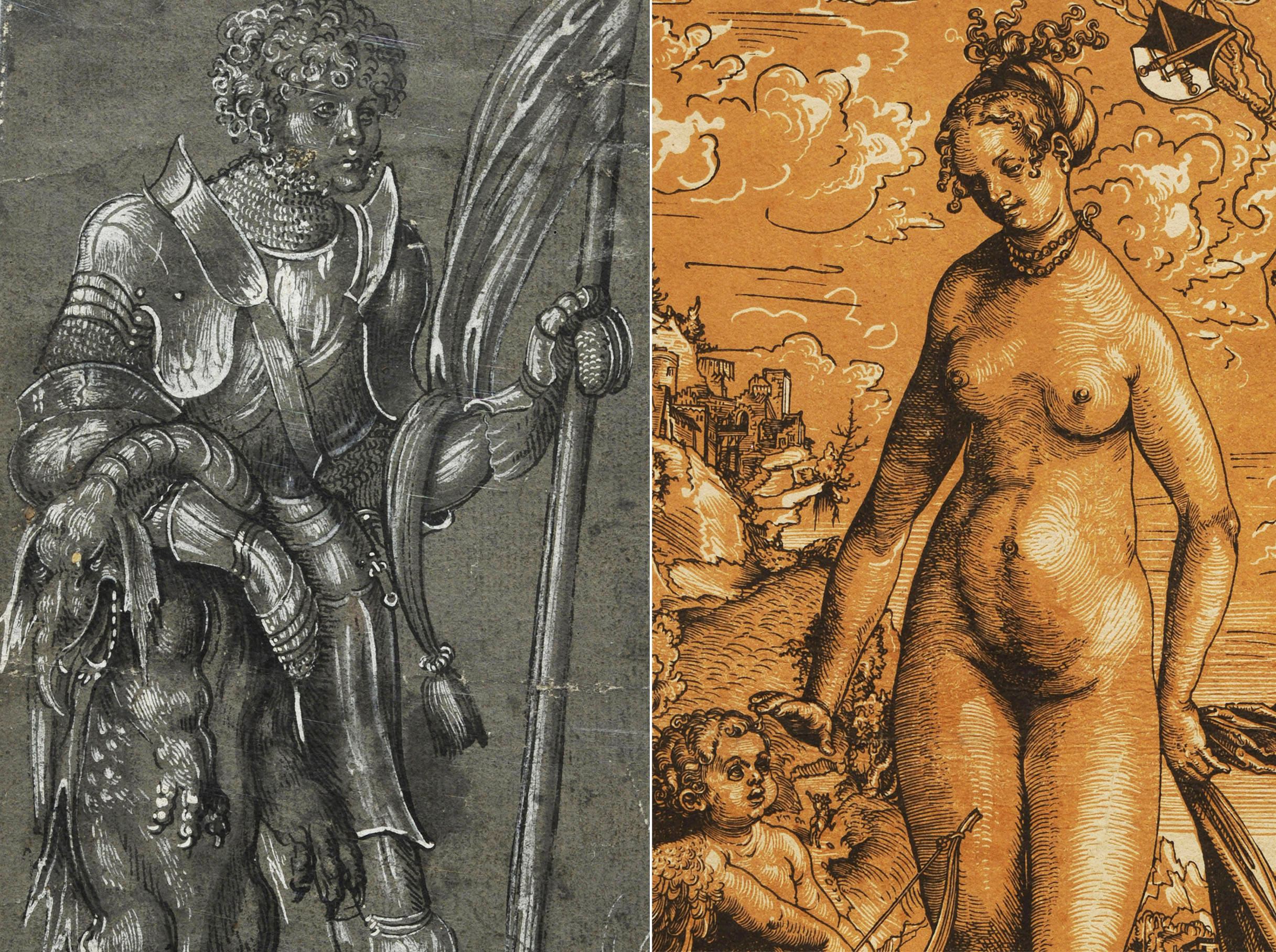
Left: Lucas Cranach the Elder, St George, about 1505, pen and brush, grey ink with highlights in white on paper with grey wash (detail), Szépmuvészeti Múzeum Budapest; Right: Lucas Cranach the Elder, Venus and Cupid, 1509, coloured print on paper (detail), Staatliche Museen zu Berlin - Preußischer Kulturbesitz, Kupferstichkabinett
For the Cranach Digital Archive a new project phase dedicated to the study of Cranach’s prints and drawings began in March 2023. The Deutsche Forschungsgemeinschaft and the Ernst von Siemens Kunststiftung are providing the financial support for the interdisciplinary research and scientific examination of the prints and drawings by Lucas Cranach the Elder, his sons and the workshop. Participants include the Kupferstichkabinett, Staatliche Museen zu Berlin, the Deutsche Dokumentationszentrum für Kunstgeschichte - Bildarchiv Foto Marburg, the Kupferstich-Kabinett, Staatlichen Kunstsammlungen Dresden, as well as other leading collections.
Over the last 10 years the paintings and archival documents have been systematically catalogued in a joint international project. Unfortunately, no equivalent comprehensive and scholarly sustainable catalogue of Cranach’s widely dispersed oeuvre of prints and drawings exists. We feel it is important to redress the balance and wish to develop a systematic online digital catalogue. In cooperation with scholars specialising in art historical research, reformation history and computer science we will examine some 300 drawings and 600 prints by Lucas Cranach the Elder, his sons and the workshop, documenting the complex relationship between the printing matrix, impressions from different states and the numerous editions. The results will be made accessible to both professionals and the general public on the international research platform cda, the Graphikportal and the on online portals of our partner institutions.
The present content of cda will provide a unique opportunity to examine the prints and drawings within a wider spectrum of primary sources and illustrate the diversity of the workshop’s central role as mediator during a time of political and confessional upheaval throughout Europe. It is with this comprehensive approach that we hope to capture a broader audience and foster an interactive interest in the German Renaissance, which would contribute to sustaining this important chapter of the world’s cultural heritage.
Read press release (in German)
Project Team
Dr. Stephanie Buck, Kupferstich-Kabinett, Staatliche Kunstsammlungen Dresden
Dr. Christian Bracht, Deutsches Dokumentationszentrum für Kunstgeschichte – Bildarchiv Foto Marburg, Philipps-Universität Marburg
Prof. Dr. Gunnar Heydenreich, Cologne University of Applied Sciences/ Kunstpalast, Düsseldorf
Prof. Dr. Dagmar Korbacher, Staatliche Museen zu Berlin, Kupferstichkabinett
Georg Josef Dietz, Staatliche Museen zu Berlin, Kupferstichkabinett
Daniel Görres, Cologne University of Applied Sciences / Kunstpalast Düsseldorf
Ariane Hennell, d:kult, Kulturamt, Landeshauptstadt Düsseldorf
Prof. Dr. David Hotchkiss Price, Vanderbilt University, Nashville/Tennessee
Jana Herrschaft, Cologne University of Applied Sciences / Kunstpalast Düsseldorf
Thomas Klinke, Wallraf-Richartz-Museum & Fondation Corboud, Cologne / Cologne University of Applied Sciences
Dr. Gudrun Knaus, Deutsches Dokumentationszentrum für Kunstgeschichte – Bildarchiv Foto Marburg, Philipps-Universität Marburg
Armin Kunz, New York
Dr. Mailena Mallach, Kupferstich-Kabinett, Staatliche Kunstsammlungen Dresden
Dr. Christien Melzer, Staatliche Museen zu Berlin, Kupferstichkabinett
Prof. Christian Noss, Cologne University of Applied Sciences
Dr. Doris Oltrogge, Cologne University of Applied Sciences
Jorge H. F. Pereira, Cologne University of Applied Sciences
Helen Smith-Contini, Cologne University of Applied Sciences / Kunstpalast Düsseldorf
Frank von Hagel, Institut für Museumsforschung der Staatlichen Museen zu Berlin
Prof. Dr. habil. Susanne Wegmann, Cologne University of Applied Sciences
Project Partner
Albertina, Vienna
Anhaltische Gemäldegalerie, Dessau
Friedrich-Alexander-University Erlangen-Nuremberg
Germanisches Nationalmuseum, Nuremberg
Klassik Stiftung Weimar, Graphic Arts Collection
Kunstsammlungen Coburg, Kupferstichkabinett
Lutherhaus, Wittenberg (Stiftung Luthergedenkstätten)
Martin-Luther-University, Halle-Wittenberg
Reformationsgeschichtliche Forschungsbibliothek Wittenberg
Stiftung Schloss Friedenstein, Gotha
Staatliches Museum, Schwerin
16 March 2023
A further 110 additional works available
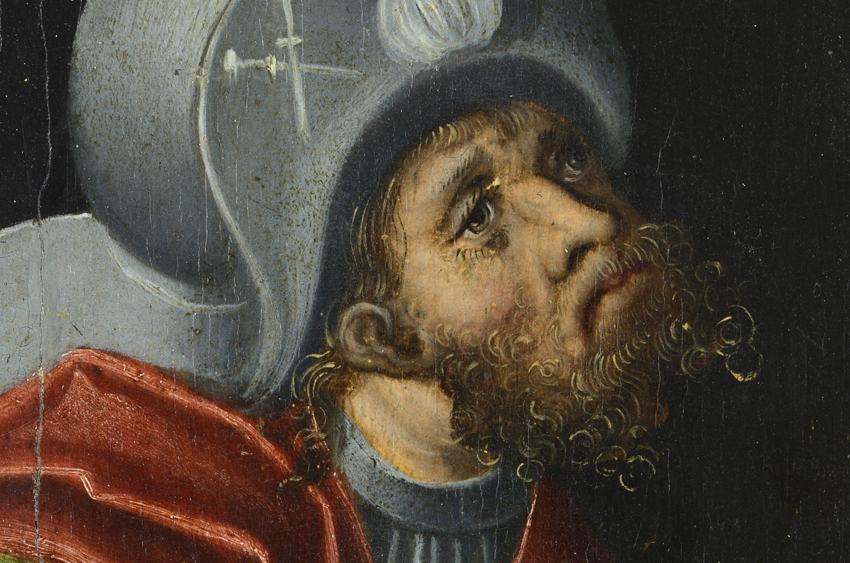
St Roche, detail of the altarpiece with scenes of the life of the Virgin (c. 1515-18)
A further 110 paintings have been added to cda, including several works that studies on Cranach had previously neglected, such as for example a small retable with scenes from the life of the Virgin (about 1515-18), now on loan in the LWL-Museum in Münster, representations of Christ as the Man of Sorrows and the Virgin as the Mother of Sorrows (about 1540) in Museum Haldensleben, as well as an impressive portrait of Martin Luther from 1547 in Gettysburg College.
2022
25 May 2022
'Critcal Catalogue of Luther portraits (1519 - 1530) is online

Examination of printed Luther portrait in Berlin, Staatsbibliothek
Tracking down the Reformer: 726 Luther portraits studied and catalogued
The ‘Critical Catalogue of Luther Portraits’ classified works from 1519 to 1530
The portraits of Martin Luther are known worldwide. Numerous motifs were created by Lucas Cranach the Elder: Luther as a Pious Monk, as Junker Jörg, as the reformer or as a husband together with his wife Katharina of Bora. Over the last four years the Germanische Nationalmuseum in Nuremberg, the Friedrich-Alexander-University Erlangen-Nuremberg and the TH Cologne have examined 726 works from the period between 1519 and 1530 to classify the great variety of these portraits. The result is a comprehensive catalogue that is freely accessible online.
Martin Luther’s importance in religious and cultural history is undisputed. Whereas the collection of his writings is complete, the portraits, which are just as important for the history of his influence, have not yet been studied systematically. ‘This makes the classification more difficult’ according to Prof. Dr. Gunnar Heydenreich from the Cologne Institute of Conservation Sciences (CICS), TH Cologne. ‘Are they authentic or do they represent a retrospective glorification? With the critical catalogue of Luther portraits, or KKL, we have for the first time developed an instrument to evaluate this important body of works in terms of art and reformation history, allowing these questions to be answered.
A key component for future Luther research
As part of the interdisciplinary project team researchers from the fields of art history, art technology, reformation history and computer science worked together. In total 641 prints and 85 paintings were examined with the assistance of scientific analysis, digitalized and assessed using the most recent pattern recognition methods. The Leibniz-Gemeinschaft sponsored the research on account of its innovative combination of humanistic, scientific and IT methods and lines of inquiry.
A comprehensive catalogue has emerged from this interdisciplinary investigation. It offers an overview of previous research and of the results of the project. ‘The data records allow paintings to be compared directly or with infra-red reflectograms. In this way the creative process, as well as similarities and deviations between individual works, can be understood – for example the different stages in the production process or later reworking. Traces of aging and conservation treatments are also discernible.’ says Wibke Ottweiler.
Thomas Klinke notes that ‚The paper used for the printed portraits was systematically characterised and contextualized using a specific matrix’ and that ‘employing this method both fundamental statements about the authenticity and the chronology of the portraits could be made and their sequence within a single edition reconstructed.’
Numerous cross-references enable conclusions to be drawn about the authenticity of the works and thus their source value for the history of the reformation. Daniel Gorres explains that ‘The KKL shows, for example, that, despite the assumptions of recent research, famous portraits such as ‘Luther as Junker Jörg’ are not retrospective historical orchestrations of the reformer from a later period. On the contrary ,they are from the early reformation years around 1522’. This underlines the importance of the early portraits of Martin Luther.
The initiative
The catalogue evolved out of a co-operation between the Cologne Institute of Conservation Sciences (CICS) and the Advanced Media Institute of the TH Cologne, the Germanische Nationalmuseum (GNM) and its conservation department (IKK) in Nuremberg , as well as the Friedrich-Alexander-University Erlangen-Nuremberg (FAU). The project managers were the art historian Prof. Dr. Daniel Hess (GNM), the church historian Prof. Dr. Anselm Schubert (FAU), the head of the Cranach Digital Archive Prof. Dr. Gunnar Heydenreich (CICS), the head of the IKK, Oliver Mack (GNM), as well as the computer scientist Prof. Dr. Andreas Maier (FAU). The initiative was sponsored over a period of four years by the Leibniz-Gemeinschaft.
10 May 2022
The 2022 Harold Jantz Lecture at Oberlin College and Conservatory
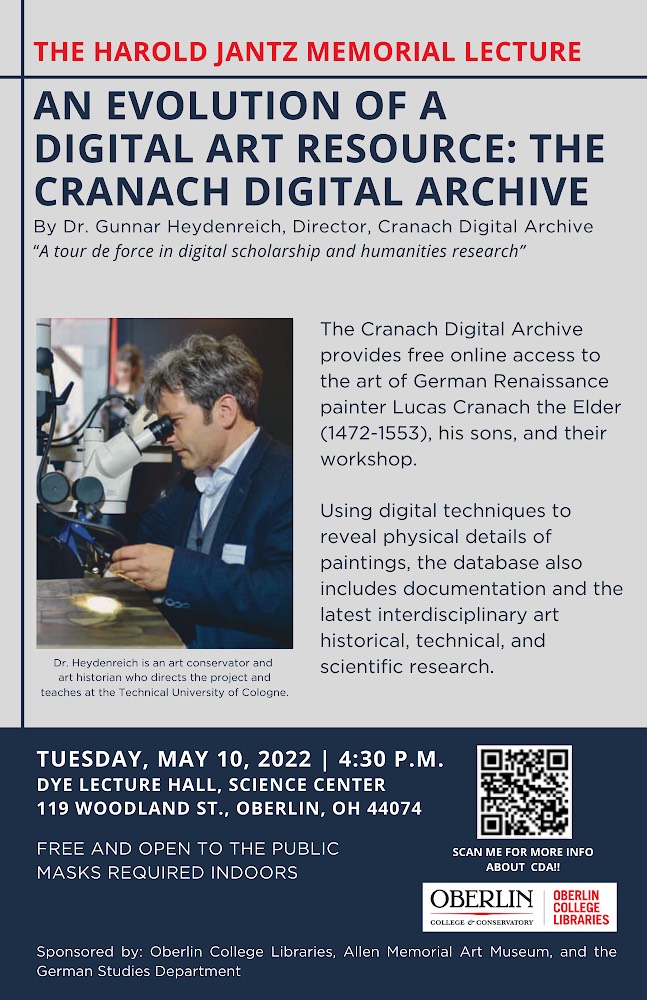
On May 10, 2022, Gunnar Heydenreich presented the Harold Jantz Memorial Lecture “The Evolution of a Digital Art Resource: The Cranach Digital Archive” at Oberlin College and Conservatory, Ohio.
“Professor Heydenreich is the perfect Jantz Lecturer,” says Valerie Hotchkiss, Director of Oberlin’s Libraries, “not only because his work is so important, but also because it encompasses the three areas specifically supported by the Jantz endowment: art history, German culture, and information science.
2021
18 October 2021
2,330 paintings represented in the Cranach Digital Archive
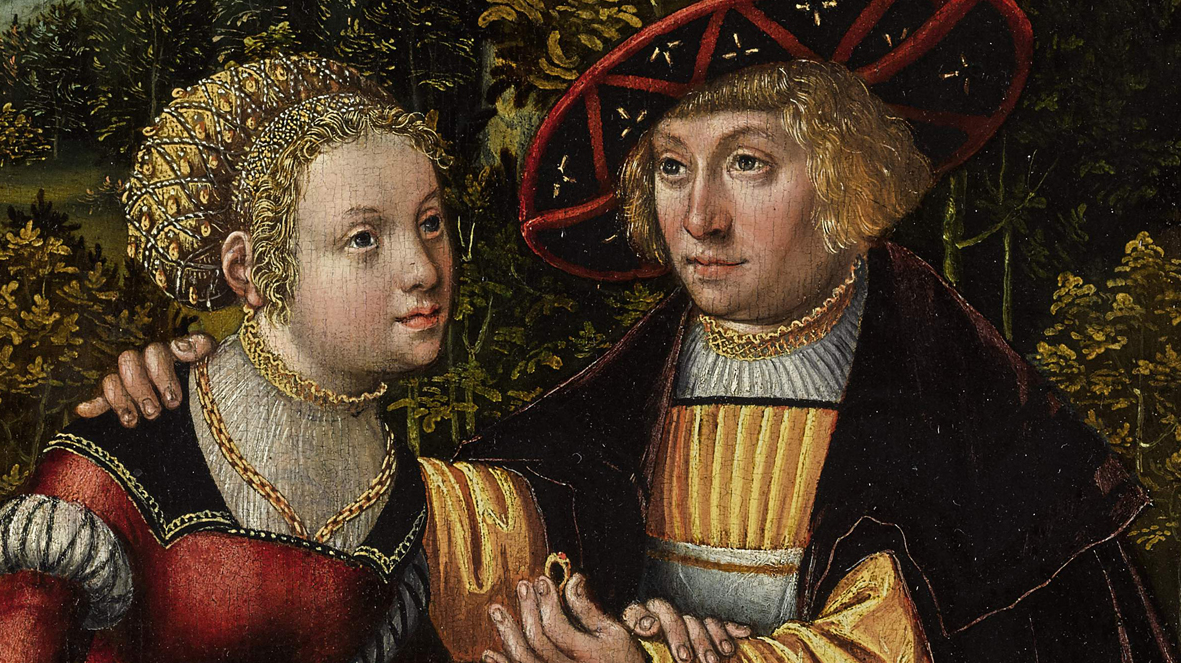
Hans Kemmer, Courtship/The Offer of Love (Detail), St. Annen-Museum, Lübeck, DE_SAML_NONE-SAML002
The cda has made a further 100 paintings by Lucas Cranach the Elder, his workshop, his circle and his followers available online. These include 22 works from the Pushkin Museum in Moscow. A cooperation agreement for further collaborative research was initiated. Furthermore, the cda has made high resolution scans of 200 large format glass plate negatives, produced for the 1937 Cranach exhibition in Berlin, accessible for the first time. Some of these works, like The Justice of Trajan, were destroyed during World War II or are considered lost. The high resolution of the glass plate negatives will provide the basis for an intended survey of the long-term changes the paintings may have undergone.
We thank the Ernst von Siemens Kunststiftung for their generous support.
The Madonna of the Grapes by Lucas Cranach the Elder is one of the most important works in the collection of the Museum zu Allerheiligen Schaffhausen. After an examination aided by the cda and a comprehensive conservation treatment the restored masterpiece is once again on display in the gallery. A short film documents the process.
From the 24.10.2021 until the 06.02.2022 the St Annen-Museum in Lübeck is the setting for the exhibition Lucas Cranach the Elder and Hans Kremmer. Master Painters between the Renaissance and the Reformation. Hans Kremmer (about 1495 – 1561) is considered to be the most innovative painter of the Reformation in Lübeck. For the first time, on the 460th anniversary of his death, an exhibition is devoted to this artist, showing his work in dialogue with a selection of works by Lucas Cranach the Elder. In cooperation with the cda some of Kremmer’s paintings were examined beforehand, providing new information about his working methods as well as his apprenticeship in the Cranach workshop. Some of the results will be published in the exhibition catalogue.
2020
21 December 2020
2,230 paintings in cda
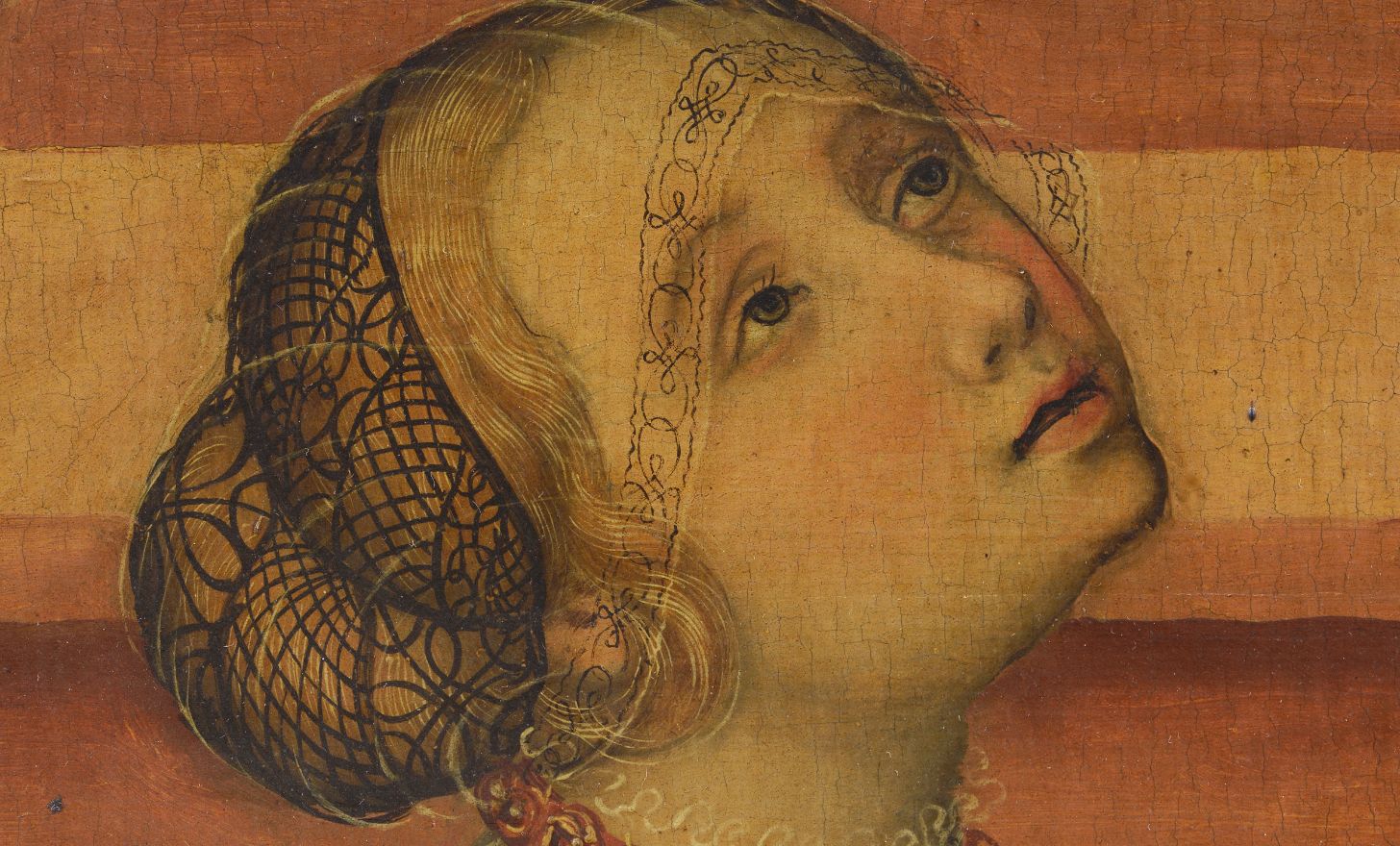
The Judgement of Solomon, The Royal Collection, London, UK_RCL_RCIN406032
With the addition of a further 80 works and a total of 2,230 paintings now accessible on the cda website the oeuvre of Lucas Cranach the Elder, his sons, his workshop and his followers is well represented and systematically catalogued. This international research platform has established the foundation for a digital and freely accessible catalogue raisonné. Subject to the requirements and possibilities of a digital catalogue the content will continue to be explored, updated and expanded employing an interdisciplinary approach to art history. We thank all the participants and invite our partner institutions and researchers to remain involved in appraising, investigating and promoting the oeuvre of one of the most significant artists of the German Renaissance.
28 August 2020
100 additional works and many more
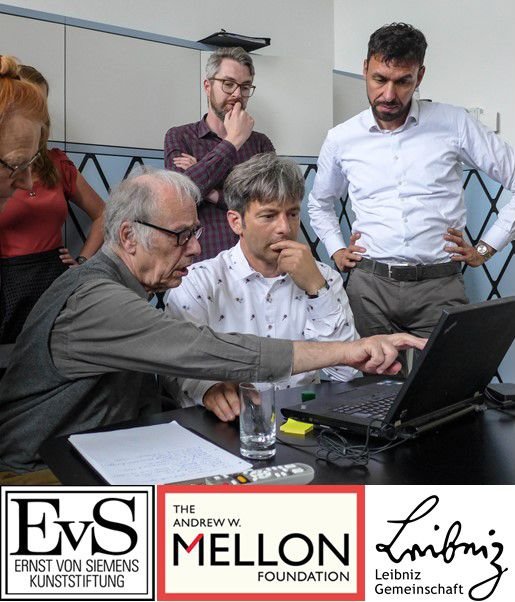
The cda-Team would like to express its gratitude for the support provided by the Ernst von Siemens Kunststiftung during the Covid-19 crisis. It enabled us to continue expanding the content of this interdisciplinary catalogue and approach a critical mass.
Our most recent update includes records pertaining to 100 paintings from both private and public collections, raising the total number of paintings to 2.150. Moreover, many existing entries have been extensively revised.
During the last two years over 700 objects in 40 collections were examined within the context of the SAW-Research Project "Critical Catalogue of Luther portraits (1519-1530)" . The results are currently being evaluated and processed in order to make them available on the cda by 2021. Meanwhile in cooperation with Prof. Christian Noss and students of the Advanced Media Institute, at the TH Cologne software development is in progress.
The third phase of the project generously supported by the Andrew W. Mellon Foundation was successfully completed in 2019. We are very grateful to the foundation and are delighted with the evaluation of the project as „the world leader in digital projects involving Old Master painting“.
Last but not least we would like to inform you that the exhibition „Cranach: Artist and Innovator“ in Compton Verney opened again in July after it was forced to close in the Spring because of the pandemic.
13 January 2020
Cranach Digital Archives welcomes new year 2020 with 50 additional works
The Cranach Digital Archive thereby representing 2,050 works in total.
The majority of added objects is orginated in private collections. Furthermore works from Landesgalerie Burgenland in Eisenstadt, Städtische Museen in Zittau and Cranach-Stiftung in Wittenberg are accessible now.
2019
25 October 2019
Sinebrychoff Art Museum and Cranach Digital Archive co-operate in preparation of the exhibition 'Lucas Cranach – Renaissance Beauties'
The Finnish National Gallery in Helsinki shows the first monographic exhibition on the work of Lucas Cranach the Elder in Finland. From 26 September 2019 until 5 January 2020 loans from international collections and the museum's own works will be presented in the Sinebrychoff Art Museum.
Prior to the exhibition two paintings were examed in co-operation with the Cranach Digital Archive.
6 June 2019
The Cranach Digital Archive adds another 100 works
2,000 paintings in total are available online.
28 January 2019
The content of the Cranach Digital Archive has been increased to 1,900 paintings and more than 1200 archival documents
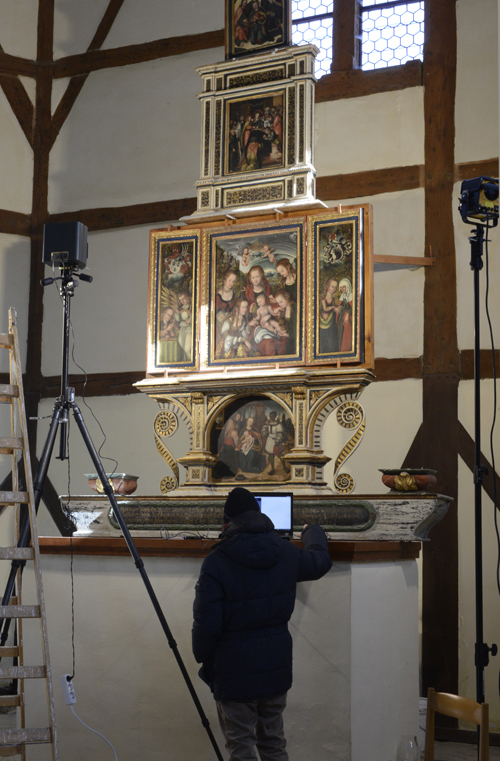
Examination of alterpiece in church of St Joachim and St Anne in Jáchymov
A further 200 paintings and more than 350 archival documents are accessible. Paintings from the following institutions and collections have been entered in the cda:
Art Museum of Estonia, Tallinn
Musée Anne-de-Beaujeu & Maison Mantin, Moulins
Carnegie Museum of Art, Pittsburgh
Portland Art Museum
Collections artistiques de l'Université de Liège - Galerie Wittert
Evangelisch-Lutherische Kirchgemeinde St. Nikolai, Leipzig
Erzgebirgsmuseum Annaberg-Buchholz
Kupferstichkabinett, Staatliche Museen zu Berlin, Preußischer Kulturbesitz
Zamek Królewski na Wawelu
Muzeum Palacu Króla Jana III w Wilanowie
Stiftsmuseum Klosterneuburg
Museum Kurhaus Kleve
Zisterzienserabtei Lilienfeld
Benediktinerstift Melk
Museum Mayer van den Bergh, Antwerp
Österreichische Galerie Belvedere, Vienna
St. Anna Kirche, Augsburg
Tiroler Landesmuseum Ferdinandeum, Innsbruck
St. Annen-Museum, Lübeck
Collection Huis Bergh Castle, `s-Heerenberg
Kulturstiftung Sachsen-Anhalt - Kunstmuseum Moritzburg
Museum Wiesbaden
Musée des Beaux-Arts, La Rochelle
Kunstsammlungen Chemnitz
Rosgartenmuseum Konstanz
Kostel svatého Jáchyma a svaté Anny (Church St Joachim and St Anne)
Muzeum Královská mincovna Jáchymov (Museum Royal Mint Jáchymov)
Kulturhistorisches Museum Görlitz
Kunstsammlungen der Veste Coburg, Coburg
Dorfkirche Klix
Museum Bautzen
Regionální muzeum v Teplicích
Stadtmuseum Baden-Baden
Rijksmuseum Het Catharijneconvent, Utrecht
Muzeum Narodowe we Wroclawiu
Muzeum Czartoryskich
Muzeum Narodowe w Krakowie
Muzeum Zamek w Goluchowie
Muzeum Narodowe w Poznaniu
Západoceská galerie v Plzni
Halle, Landesamt für Denkmalpflege, Archiv
Karlovy Vary (Karlsbad), Regional Museum
Stiftskirche Unsere Liebe Frau, Baden-Baden
2018
2 August 2018
Start of the project 'A Critical Catalogue of Luther Portraits (1519-1530)'
Meanwhile the SAW- research project 'A Critical Catalogue of Luther Portraits (1519-1530)' has started successfully and over the next three years in cooperation with the Cranach Digital Archive it will examine portrait of Martin Luther. The research results will be published in the Cranach Digital Archive.
The following participate in the project:
Dr. Daniel Hess, GNM Nürnberg
Oliver Mack, GNM Nürnberg
Prof. Dr. Anselm Schubert, FAU Erlangen-Nürnberg
Prof. Dr. Gunnar Heydenreich, TH Köln
Prof. Dr. Andreas Maier, FAU Erlangen-Nürnberg
Daniel Görres, GNM Nürnberg/MKP Düsseldorf
Wibke Ottweiler, GNM Nürnberg,
Thomas Klinke, TH Köln
Amalie Hänsch, GNM Nürnberg
Vincent Christlein, FAU Erlangen-Nürnberg
Aline Sindel, FAU Erlangen-Nürnberg
2 April 2018
Presentations and new publications
More recently the Cranach Digital Archive has been presented and discussed as a model for other projects, for example at the following venues:
- Rome, 26 June 2017, Bibliotheca Hertziana, Max Planck Institut für Kunstgeschichte
- Oslo, 18 October 2017, Munch Museum
- Tokyo, 10 November 2017, Dokkyo University International Forum
New Publications
The Cranach Digital Archive team has presented the results of recent research in the following publications:
Lucas Cranach der Jüngere. Archivalische Quellen zu Leben und Werk, introduced and edited by Monika and Dieter Lücke (Schriften der Stiftung Luthergedenkstätten in Sachsen-Anhalt 22), Evangelische Verlagsanstalt, Leipzig 2017.
Thomas Pöpper (Hg.): Cranach in Zwickau. Das Retabel in der St. Katharinenkirche, Schnell & Steiner, Regensburg 2017.
I volti della Riforma. Lutero e Cranach nelle collezioni medicee, (exhibition catalogue, Uffici, Florence, 31 October 2017 - 7 January 2018), Giunti, Florence 2017.
2017
25 October 2017
Cranach exhibition in Düsseldorf and 100 new works
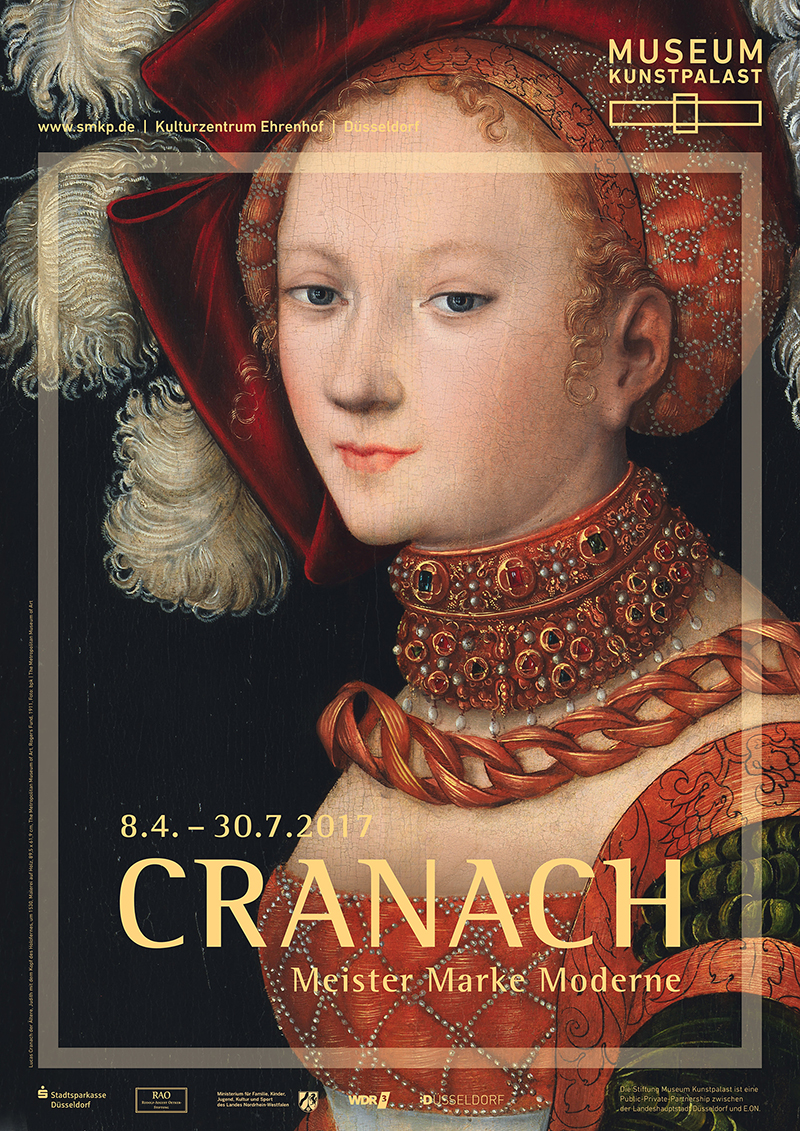
The exhibition ‘Cranach. Meister – Marke – Moderne’ held at the Museum Kunstpalast attracted about 94,000 visitors over its 16-week run. During this time about 230 works from important collections were exhibited as well as some paintings that were shown for the first time to the public.
A comprehensive catalogue accompanying the exhibition was published by Hirmer with texts by Anne-Marie Bonnet, Bodo Brinkmann, Georg Josef Dietz, Daniel Hess, Daniel Görres, Gunnar Heydenreich, Dieter Koepplin, Oliver Mack, Guido Messling, Elizabeth Savage, Ad Stijnman, Susanne Wegmann und Beat Wismer.
Editors: Gunnar Heydenreich, Daniel Görres, Beat Wismer
Reviews of the exhibition (selection):
Frankfurter Allgemeine Zeitung
Kölnische Rundschau
In the wake of the exhibition ‘Cranach. Meister – Marke – Moderne’ the cda has expanded its content to include a further 100 works and more than 500 archival documents (newly transcribed and commented) from the Stadtarchiv Wittenberg.
The latest additions include works from the following collections and institutions:
Bayerisches Nationalmuseum, Munich
Brooklyn Museum, New York
City Museum & Art Gallery, Bristol
The Cleveland Museum of Art
Domstift Brandenburg an der Havel
Ev. Kirchengemeinde Klitten
Ev. Kirchengemeinde St. Petri - St. Marien, Berlin
Ev.-Luth. Kirchgemeinde St. Wolfgang, Schneeberg
Ev.-Luth. Kirchgemeinde Thallwitz-Nischwitz
Franzikanerkirche zum heiligen BIschof Nikolaus, Čakovec
Friedhofskapelle Heilig Kreuz, Stadt Grimma
Galleria Borghese, Rome
Galleria Uffizi, Florence
Gemäldegalerie der Akademie der Künste, Vienna
Hauptkirche St. Nikolai, Hamburg
Kaiser Wilhelm Museum Krefeld/Kunstmuseen Krefeld
Karl und Magdalene Haberstock-Stiftung, Augsburg
Kunsthaus Zürich
Kunstsammlungen der Veste Coburg, Coburg
Landesmuseum Mainz
LWL-Museum für Kunst und Kultur Münster/Westfälischer Kunstverein
Musée d'Art et d'Histoire, Geneva
Musée des Beaux-Arts, Strasbourg
Musée des Beaux-arts du Canada/National Gallery of Canada, Ottawa
Musée du Louvre, Paris
Museo Lázaro Galdiano, Madrid
Museo Nacional de San Carlos/Instituto Nacional de Bellas Artes, Mexico City
Museu Nacional d'Art de Catalunya (MNAC), Barcelona
Norton Simon Art Foundation, Pasadena, California
Österreichische Galerie Belvedere
Petit Palais, Musée des Beaux-Arts de la Ville des Paris
Sammlung Rau für UNICEF im Arp Museum Bahnhof Rolandseck, Remagen
Schaezlerpalais, Augsburg
Staatliche Eremitage, St. Petersburg
Staatsgalerie Augsburg, Katharinenkirche
Stiftung der Herzog von Sachsen-Coburg und Gotha'schen Familie, Gotha
Wartburg-Stiftung, Eisenach
In addition we have included works from private collections and some lost paintings.
24 May 2017
Cranach exhibition in Düsseldorf with more than 35,000 visitors so far
The large monographic exhibition ‘Cranach. Master – Hallmark – Modernism’ has already received over 35,000 visitors and will continue to run until the 30th of July in the Museum Kunstpalast, Düsseldorf.
Readings, concerts and lectures will accompany the exhibition. Read more: www.cranach2017.de
05 April 2017
1,600 works and 378 archival documents are now available online
The Cranach Digital Archive has enhanced its content and now presents high resolution images and extensive information pertaining to 1,600 paintings and 378 archival documents. The comprehensive bibliographic database currently contains about 3,300 entries.
2016
12 October 2016
Museum Kunstpalast shows major Cranach exhibition in cooperation with Cranach Digital Archive to celebrate the 500th anniversary of the Reformation
CRANACH
Master - Hallmark - Modernism
‘...And coming events cast their shadows before’: Lucas Cranach the Elder ranks among the most eminent painters of the German Renaissance. He was a close friend of Martin Luther and had a significant influence on artists across the centuries. One of the highlights of the anniversary year in the, Museum Kunstpalast in Düsseldorf is a major exhibition dedicated to the Wittenberg painter from 8 April to 30 July. For the first time the exhibition explores Cranach the Elder’s productivity in its entirety and modernity, demonstrating his successful strategies and the influence of this exceptional artist on modern and contemporary art. The latest research results reveal hitherto unknown sides of this exceptional artist.
For the Düsseldorf exhibition, which will be the highlight of the Luther decade 2017, about 230 works will be brought together from international museums and collections, including the Metropolitan Museum of Art in New York, the National Gallery in London, the Museo Thyssen-Bornemisza in Madrid, the Museum of Fine Arts in Budapest, as well as the Nationalmuseum Stockholm. High-quality exhibits will be on show like the live-size “Venus and Cupid” from St. Petersburg, “Christ and the Adulteress” from Budapest, and the so-called Prague Altarpiece, whose widely-scattered component parts will be united for the duration of this important exhibition in Düsseldorf. A range of further high-quality panel paintings, drawings and prints will document Cranach’s influential role in the spread of the Reformation, as well as his prudent dealings with the most eminent aristocratic patrons of the 16th century. In juxtaposition with works by Albrecht Dürer, Hans Holbein the Younger, Jacopo de’ Barbari and Lorenzo Costa the Elder the exhibition will explore Cranach’s position within the network of the artists of his time.
The exhibition traces the impact of Cranach’s art still in evidence in modern and contemporary art. Works by Pablo Picasso, Marcel Duchamp, Alberto Giacometti, Otto Dix, Andy Warhol and Martial Raysse reveal the significant influence of Cranach’s pictorial language on the principal pioneers of Modernism.
The most recent results from technological examinations and archival research provide fascinating insight into the daily working routine of the important and most productive 16th century German painter. Cranach’s paintings testify to an enormous range of innovative compositional solutions and novel subjects, that he as a close friend of Martin Luther, developed during this period of religious conflict and which were rapidly disseminated across the European continent.
The exhibition takes the visitor on a journey through time to the painter’s flourishing workshop and offers fascinating insight into the artistic process involved in creating a painting: Using state-of-the-art technology underdrawings concealed by the paint layers are revealed to the visitor for the first time. They also disclose the diversity of material and tools employed and reveal the artist’s efficient mode of procedure. For instance, Cranach developed a number of methods to economise and optimise the painterly process, in order to be able to produce high-quality pictures in large quantities.
A number of media stations within the exhibition and a wide-ranging educational programme will bring the time of the great Wittenberg painter back to life. A comprehensive catalogue on the Lucas Cranach exhibition will be published by Hirmer Verlag.
SCIENTIFIC ADVISORY COUNCIL
Dr. Bodo Brinkmann (Kunstmuseum Basel), Dr. Susan Foister (The National Gallery London), Dr. Daniel Hess (Germanisches Nationalmuseum Nuremberg), Prof. Dr. Thomas Kaufmann (University of Göttingen), Prof. Dr. Dieter Koepplin (Basle), Dr. Guido Messling (Kunsthistorisches Museum Vienna), Dr. Matthias Weniger (Bayerisches Nationalmuseum München)
16 June 2016
National Gallery in Prague and Cranach Digital Archive in cooperation on exhibition
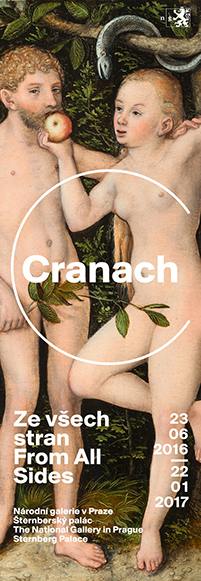
Cranach From All Sides
Paintings by Lucas Cranach and His Circle from the Collections of the National Gallery in Prague
Date: 23.06.2016 - 22.01.2017
Place: Sternberg Palace, Prague
Curator: Olga Kotková
The exhibition “Cranach From All Sides” will present the German Renaissance painter and his circle not only via unique works from the collections of the National Gallery in Prague but also via the most interesting results of research realized by a team of experts from the Cranach Digital Archive Düsseldorf. The group of the Prague works linked with the artist’s name is extraordinarily heterogeneous and includes very attractive and popular scenes such as The Old Fool, Christ and the Adulteress and The Original Sin (Adam and Eve). The research has revealed many yet unknown facts about these as well as other works, among them also information about the technological process of the origination of the works and especially their copies. The exhibition in the Sternberg Palace will thus introduce visitors to the most recent discoveries linked with the most precious works held by the National Gallery in Prague and will, at the same time, present the Cranach workshop as a ingeniously organized unit based on precise working methods.
02 June 2016
TV documentaries in cooperation with the Cranach Digital Archive
On 03 June 2016, 17:30, "arte" broadcasts the documentary
"Geheimakte Geschichte: Die Cranach Connection"
51 min., directed by: Heike Nelsen-Minkenberg, Thomas Müller
Information on the documentary
(First broadcast 21 May 2016, 21:05)
Other documentaries in cooperation with the cda:
"Die Cranachs und die Moderne im Mittelalter"
Deutsche Welle, 2015, 42 min., directed by: Peter Schloegl
See documentary
"Lucas Cranach der Jüngere - Maler, Unternehmer, Politiker"
MDR 2015, 45 min.,
directed by: Gabriele Rose
19 May 2016
New website design and 100 additional works
Since January 2016 the Cranach Digital Archive has introduced a new responsive web design, optimizing use for mobile devices.
Now you are able to compare selected images by using drag & drop; a search history helps to optimize the usability of the cda as well.
Furthermore the cda has enhanced its content and now provides high resolution images and extensive information pertaining to 1,500 paintings and 345 archival documents.
With this update the Cranach Digital Archive presents x-ray images from Paolo Cadorin’s archive (Basel), which date back to 1974.
Works from the following institutions have been entered in the cda:
Anhaltische Landesbücherei Dessau
Brighton Museum & Art Gallery
Burrell Collection, Pollok Country Park, Glasgow
Cincinnati Art Museum
Diözesanmuseum Freising
Ev. Kirchengemeinde St. Bartholomäi, Zerbst
Ev.-Luth. Kirchengemeinde Niendorf, Hamburg
Ev.-Luth. Nicolai-Kirchgemeinde Zwickau, Dom St. Marien
Fränkische Galerie, Kronach/Bayrisches Nationalmuseum Munich
Harvard Art Museums/Fogg Museum, Cambridge, Mass.
KODE Kunstmuseene i Bergen, Bergen Kunstmuseum
Koninklijk Museum voor Schone Kunsten, Antwerp
Legion of Honour, Fine Arts Museums of San Francisco
Lobkowicz Collections, Prague
LWL-Museum für Kunst und Kultur Münster
Mainfränkisches Museum, Würzburg
Musée Anne-de-Beaujeu & Maison Mantin, Moulins
Musée National d'Histoire et d'Art, Luxembourg
Museo Lázaro Galdiano, Madrid
Museo Nacional del Prado, Madrid
Museu de Arte de São Paulo
Museum Sønderjylland, Sønderborg Slot
Philadelphia Museum of Art
St. Kunigundenkirche Rochlitz
Stiftung August Ohm, Hamburg
Walker Art Gallery, Liverpool
Further additions include numerous works from private collections and lost works .
2015
24 November 2015
The content of the Cranach Digital Archive has been increased to more than 1,400 works
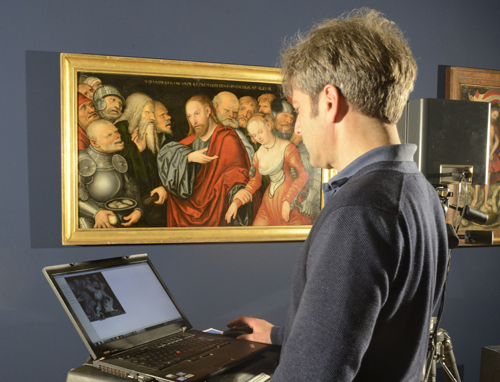
In October 2015 the cda-Team examined paintings in the exhibition "Lucas Cranach der Jüngere. Entdeckung eines Meisters" in Wittenberg. The results will be available in the cda soon.
A further 100 works are accessible with c. 900 additional images/files and extensive text information. Furthermore the cda continues to expands the existing entries with additional data.
Paintings from the following institutions and collections have been entered in the cda:
Hessisches Landesmuseum Darmstadt
Keresztény Múzeum, Esztergom
Königliches Schloss Berchtesgaden
Lowe Art Museum, University of Miami, Coral Gables
Mauritshuis, The Hague
The Morgan Library & Museum, New York
Museu Nacional d'Art de Catalunya (MNAC), Barcelona
Museum der bildenden Künste, Leipzig
Niedersächsisches Landesmuseum Hannover
Sammlung Würth
Ev.-Luth. Kirchengemeinde Döbeln
Staatsbibliothek zu Berlin - Preußischer Kulturbesitz, Abt. Historische Drucke
Staatsgalerie Stuttgart
Stadtmuseum Dresden
Suermondt-Ludwig-Museum, Aachen
Syracuse University Art Galleries, New York
Moreover works from private owners and not preserved paintings have been added. In total the Cranach Digital Archive presents extensive information on paintings from 193 institutions and numerous private collections.
17 June 2015
1,300 works by the Cranach family of painters in the cda
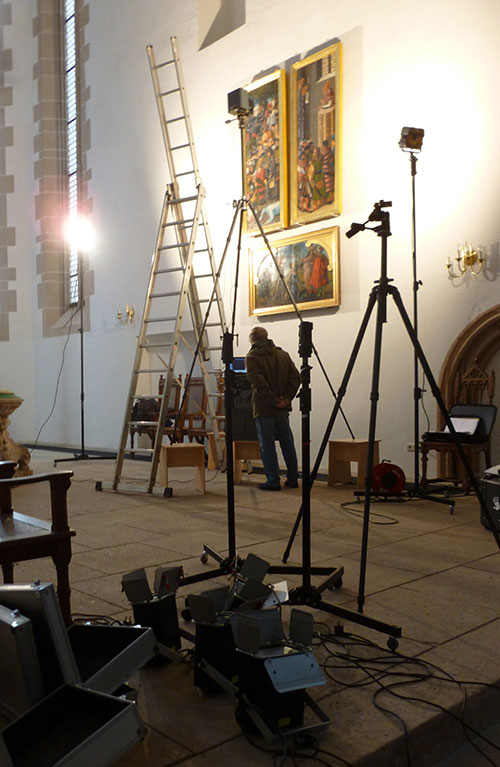
Examination of Cranach paintings in the Schlosskirche Chemnitz
The Cranach Digital Archive has added a further 100 paintings, thereby representing 1,300 works in total. As co-operation partner of the exhibition ‘Lucas Cranach the Younger. Discovering a Master’ (Wittenberg, Stiftung Luthergedenkstätten in Sachsen-Anhalt, 26 June - 1 November 2015) these additions essentially encompass works by Lucas Cranach the Younger. Additional documentation and research results have also been added.
Paintings from the following institutions have been entered in the cda:
Erzgebirgsmuseum Annaberg-Buchholz
Ev. Hoffnungsgemeinde Zieko (Kreuzkirche Klieken)
Ev. Kirchengemeinde Coswig
Ev. Kirchengemeinde St. Agnus, Köthen
Ev. Kirchengemeinde St. Bartholomäi, Zerbst
Ev. Kirchengemeinde St. Johannis und St. Marien, Nienburg
Ev. Kirchengemeinde Wörlitz
Ev. Marktkirchengemeinde Halle
Ev.-Luth. Kirchgemeinde Annaberg-Buchholz
Ev.-Luth. St.-Petri-Schlosskirchgemeinde Chemnitz
Galleria Uffizi, Florenz
Kulturstiftung Dessau Wörlitz
Kunstsammlung der Universität Leipzig
Lindenau-Museum Altenburg
Museum Boijmans Van Beuningen, Rotterdam
Museum Weißenfels - Schloss Neu-Augustusburg
The National Trust, Waddesdon Manor
Nivaagaards Malerisamling, Nivå
Stadtmuseum Meißen
University of Arizona, Museum of Art, Tucson
Vereinigte Domstifter zu Merseburg und Naumburg und des Kollegiatstifts Zeitz
The Walters Art Museum, Baltimore (Maryland)
as well as further works from private collections.
27 April 2015
Cranach Digital Archive starts a third project phase in June 2015
We are pleased to announce that the Andrew W. Mellon Foundation will continue to support the Cranach Digital Archive for the next three years (2015-2018). This approval reflects the generous support and the very productive interdisciplinary and international collaboration during the previous phases for which we would like to thank all partners and contributors very much.
The new generous grant from the Mellon Foundation provides us with the opportunity to further develop the cda towards an innovative, comprehensive and sustainable research resource. By December 2018 the cda will be supported as a permanent joint venture by the Museum Kunstpalast, Cologne University of Applied Sciences and the Deutsches Zentrum für Kunstgeschichte – Bildarchiv Foto Marburg (Germany's documentation center for art history). We are looking forward to continuing our collaboration with current partners and hope to welcome many new ones.
Project Status April 2015:
- since 2009 the cda team has established collaboration and exchange with more than 160 institutions in 24 countries
- the cda provides free online-access to art historical, technical and conservation information on 1,200 paintings including:
• more than 11,200 high resolution images
• more than 850 pdf documents
• more than 5,000 text pages (in German and English)
• 981 infrared-reflectograms
• 320 x-radiographs
- the project team examined more than 900 paintings in 81 collections and documented these works with digital photography, digital microscopy and infrared reflectography (not yet all online)
- at the present time the cda provides free online-access to scans and new transcriptions by Monika and Dieter Lücke of 345 pages of archival documents
- the following archives were digitized in the second project phase:
• Dieter Koepplin archive (Basle) [7,500 files – completed, partly online]
• Max J. Friedländer archive (RKD, The Hague) [1,090 files – completed, partly online]
• Peter Klein archive [c. 300 reports – completed, largely online]
- the bibliographical database presently lists 2,850 Cranach related publications
03 March 2015
1,200 works and 345 archival documents are now available online
The Cranach Digital Archive has enhanced its content and now presents high resolution images and extensive information pertaining to 1,200 paintings and 345 archival documents. Since December 2014 a comprehensive bibliographic database has also been available on the site. It currently contains over 2,850 entries and continues to expand. The list of institutions participating in this international project grows longer as the number of works increases.
The following institutions are new:
Ackland Art Museum, The University of North Carolina at Chapel Hill
Bischöfliches Dom- und Diözesanmuseum Mainz
Ev. Kirchengemeinde Mittenwalde
Hallwylska museet, Stockholm
Kanonie premonstrátu v Nové Ríši (Premonstratensian Abbey Nová Ríše)
Mauritshuis, The Hague
Museo Nacional de San Carlos/Insituto Nacional de Bellas Artes, San Carlos
Museum Wiesbaden
Rijksmuseum Twenthe, Enschede
Skoklosters slott, Stockholm
The Morgan Library & Museum, New York
The Muskegon Museum of Art, Muskegon, Michigan
Thüringer Universitäts- und Landesbibliothek Jena
Tiroler Landesmuseum Ferdinandeum, Innsbruck
Vereinigte Domstifter zu Merseburg und Naumburg und des Kollegiatstifts Zeitz
Wadsworth Atheneum, Hartford, Connecticut
Zentralarchiv der Staatlichen Museen zu Berlin
and numerous private collections.
2014
15 December 2014
A database listing Cranach-related publications is now available online
The Cranach Digital Archive provides a continuously expanding database of Cranach publications - at present more than 2,750 publications are listed. Search and filter functions enable the user to conduct a systematic research.
06 October 2014
Cranach Digital Archive – new functions, new artworks
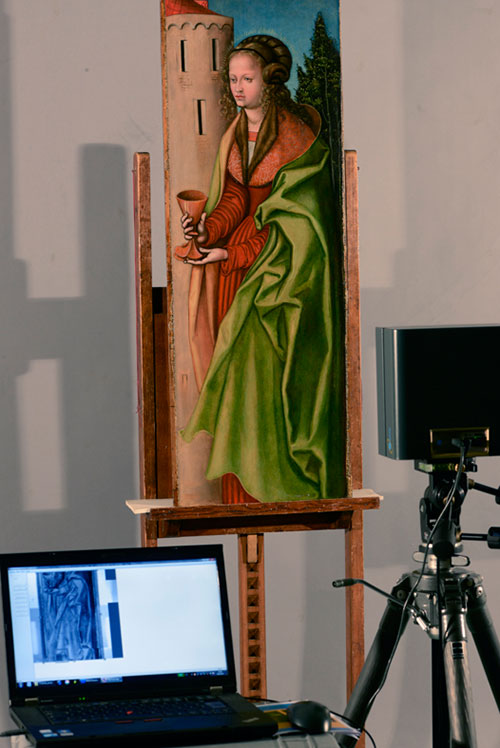
Infrared-reflectography of the panel with St Barbara in the Moravian Gallery Brno
The Cranach Digital Archive now offers a variety of new tools, making research in the archive more efficient and user friendly. These include:
• a Split screen, which enables the user to view two images simultaneously for comparative study.
• a Search history that lists previously viewed paintings.
• a Personal gallery where each user can save a personalised selection of paintings employing a drag-and-drop function.
Moreover a further 100 paintings and scans of 50 archival documents and their corresponding transcriptions have been entered in the Cranach Digital Archive. Important paintings from collections in the Czech Republic and Hungary that were examined and documented in cooperation with the cda-Team are among the new entries. Currently there are 1,100 paintings and 150 archival documents entered in the cda.
The following collections and institutions are represented by new paintings in cda:
Bischöflicher Stuhl, Eichstätt
Cleveland Museum of Art
Convent of St Agnes, Prague
Dompfarrei St. Jakob, Innsbruck
John and Mable Ringling Museum of Art, Sarasota
Kapuzinerkloster Innsbruck
Kunsthistorisches Museum Vienna
Landesmuseum für Kunst und Kulturgeschichte Oldenburg
Ludwig Roselius Museum, Bremen
Moravian Gallery, Brno
Musée du Louvre, Paris
Museo de Arte de Ponce, Puerto Rico
Museum of Fine Arts, Houston
Museum and Gallery of the Diocese Litoměřice
National Gallery in Prague
North Bohemian Gallery of Fine Arts, Litoměřice
North Carolina Museum of Art, Raleigh
Prague Castle Painting Gallery Private Collections
Regional Museum Chomutov
Royal Canonry of Premonstratensians at Strahov, Prague
San Diego Museum of Art
Servitenkonvent St. Josef, Innsbruck
Städel Museum, Frankfurt
Toledo Art Museum, Toledo, Ohio
21 May 2014
Public presentations of the Cranach Digital Archive in 2013/2014
2013 January
• Bonn, University, workshop
2013 May
• Bonn, Conference ‘Museums and the Internet’2013 October
• Dresden, Staatliche Kunstsammlungen, workshop
2013 November
• Zwickau, Cranach symposium
• Meißen, Domstift, public lecture
• Berlin, EVA 2013. Elektronische Medien & Kunst, Kultur, Historie, Staatliche Museen zu Berlin
2014 February
• Oslo, University, public lecture
2014 March
• Weimar, Conference ‚'Cranach in Weimar’
• Wittenberg, International Symposium‚ ‚’Cranach der Jüngere und die Reformation der Bilder’
2014 May
• The Hague, International congress ‘Authentication in Art’
• Berlin, Humboldt Universität, public lecture
2014 September
• Dresden, Annual Conference of the International Council of Museums (ICOM) Committee for Documentation (CIDOC) ‘Access and Understanding: Networking in the Digital Era’
• Melbourne, Triennial Conference of the International Council of Museums (ICOM) Conservation Committee (ICOM-CC)
Publications
• The Cranach Digital Archive: Challenges and Perspectives for Collaborative Art Technological and Art Historical Research. In: Großmann, G. U. (Hrsg.) The challenge of the object. Postprints of the 33rd congress of the International Committee of the History of Art (CHIA2012), 15th – 20th July 2012, Nuremberg (2013) 608-612.
• Das Cranach Digital Archive – eine Ressource für interdisziplinäre Forschung. In: Bienert, A., Weckend, F., Hemsley, J., (Hrsg.) Konferenzband: EVA2013 Berlin.
Elektronische Medien & Kunst, Kultur, Historie. 6.-8. November 2013, Berlin (2013) 43-48.
17 March 2014
The content of the Cranach Digital Archive has been increased to over 1,000 works.
A further 200 works are accessible with c. 1,400 additional images/files and extensive text information. Furthermore the cda continues to expand the existing entries with additional data.
Paintings from the following institutions and collections have been entered in the cda:
Bischöflicher Stuhl, Eichstätt
Crocker Art Museum, Sacramento
Diözesanmuseum Hofburg Brixen
Ev. Kirchgemeinde St. Johannis und St. Marien, Dessau
Ev. Kirchgemeinde St. Nikolai, Jüterbog
Ev.-Luth. Kirchgemeinde St. Kunigundis, Rochlitz
Fine Arts Museums of San Francisco, Legion of Honour
Gemäldegalerie Alte Meister, Kassel
The Heckscher Museum of Art, Huntington
Johann-Friedrich-Danneil-Museum Salzwedel
Kunsthistorisches Museum Vienna
Martin von Wagner Museum der Universität Würzburg
Musée d'Art Thomas Henry, Cherbourg
Musée de la Chasse et de la Nature, Paris
Musée des Beaux-Arts et d'Archéologie, Besançon
Musée des Beaux-Arts de Lyon
Musée du Louvre, Paris
Musée Unterlinden, Colmar
Museo Poldi Pezzoli, Milan
Museum zu Allerheiligen, Schaffhausen
Museum des Domstifts Brandenburg
Palais des Beaux-Arts, Lille
Pérez Simón Collection, Mexico City
The Princely Collections of Liechtenstein, Vaduz - Vienna
Städel Museum, Frankfurt
Statens Museum for Kunst, Copenhagen
Stiftung Preußische Schlösser und Gärten Berlin-Brandenburg
Sinebrychoffin Taidemuseo, Helsinki
Universalmuseum Joanneum, Schloss Eggenberg, Alte Galerie, Graz
Wallraf-Richartz-Museum & Fondation Corboud, Cologne
Winnipeg Art Gallery
Moreover a large number of works from private owners has been added. In total the Cranach Digital Archive presents extensive information on more than 1,000 paintings from 127 institutions and numerous private collections.
20 February 2014
Conference: Cranach in Weimar
18/19 March 2014, Weimar, Goethe-Nationalmuseum, Festsaal
The two-day conference, organised by the Klassik Stiftung Weimar, addresses the outstanding works by Cranach in Weimar and their reception through the centuries. The first day focuses on the famous altarpiece in the church St. Peter and Paul (Herderkirche). Completed in 1555, it is one of the main works of Reformist Art. Meaning, message and impact of the retable, commissioned in commemoration of Johann Friedrich the Magnanimous and Sibylle of Cleve, will be studied and discussed comprehensively for the first time.
The second day is dedicated to the memoria of Cranach and his reception within Weimar, highlighting periods of more acute appreciation of his work, like the era of Goethe.
The conference will serve as a preparation for the exhibition "Cranach in Weimar" (April 3 to June 14 2015, Schiller-Museum). The conference papers will be published in Jahrbuch der Klassik Stiftung Weimar 2015.
20 January 2014
International Symposium Lucas Cranach the Younger and the Reformation of the Image
20.-22. March 2014, Wittenberg, Leucorea
On the occasion of the 500th anniversary of Lucas Cranach the Younger's (1515 - 1586) birth, numerous events will take place in 2015 to honour him. In the run-up to that year, the proposed symposium wishes to focus on the life and work of the artist. Since his father, Lucas Cranach the Elder, has been the main centre of interest of recent research and exhibitions, the aim of this conference is for the first time to delineate more precisely, and to devote proper critical attention to, the biography and oeuvre of his younger son. On this basis we hope to acquire new insights into the genesis and evolution of pictorial concepts of the Reformation within the Cranach workshop, with particular emphasis on artistic materials and methods used to deploy the paintings as persuasive agents for the new faith. As such, the symposium will make a fundamental contribution to the Reformation Decade, which is organising a thematic year in 2015 on 'The Bible and the Image' to mark Cranach the Younger's anniversary.
With an interdisciplinary perspective and a diverse methodological apparatus, the conference therefore aims to examine the widespread perception of the relationship between Lucas Cranach the Elder and his son Lucas Cranach the Younger, as well as the contribution of the son to workshop production; to establish the extent of continuity and changes in the workshop after 1537 and again after 1550 (or 1553); and to position Lucas Cranach the Younger in the contemporary network of artistic, religious, political and societal figures. In this regard, new research on iconographical, formal and stylistic specifics of Cranach works will be presented to discuss questions of form and function, aspiration and status, and meaning and ambivalence of Reformation imagery within the context of a new Reformation historiography.
2013
28 October 2013
The content of the Cranach Digital Archive has been increased with the entry of a further 100 works, that are made accessible through hundreds of additional images and pages of text information. The cda continues to systematically add new data
Paintings from the following institutions and collections joined the cda:
Detroit Institute of Arts
Evangelisch-Lutherische Kirchgemeinde Collm-Lampersdorf
Evangelisch-Lutherische Kirchgemeinde St.-Nikolai, Weistropp-Constappel
Hochstift Meißen, Dom zu Meißen
Kimbell Art Museum, Fort Worth
Kunsthistorisches Museum Wien
Metropolitan Museum of Art, New York
Museu National de Arte Antiga, Lisbon
Museum of Fine Arts, Boston
Museum of Fine Arts, Houston
National Gallery of Ireland, Dublin
Nationalmuseum Stockholm
Princeton University Art Museum
Rijksmuseum, Amsterdam
Royal Cornwall Museum, Truro
Schloss Augustusburg
Staatliches Museum Schwerin, Galerie Alte und Neue Meister sowie Museum Schloss Güstrow
Städel Museum, Frankfurt/M. Wartburg-Stiftung, Eisenach
In total the Cranach Digital Archive presents extensive information on more than 800 paintings from 103 institutions and private collections.
10 April 2013
A further 100 paintings and c. 1,000 images as well as extensive text information are accessible to scholars and the general public.
Paintings from the following institutions and collections are new in the Cranach Digital Archive:
Angermuseum, Erfurt
Burg Eltz, Münstermaifeld
Evangelische Kirchengemeinde St. Johannis, Neustadt an der Orla
Herzog Anton Ulrich-Museum, Braunschweig
Kunstsammlung Gera
Museo Thyssen-Bornemisza, Madrid
Museu Nacional d'Art de Catalunya, Barcelona
Museum of Art, Indianapolis
Muzeum Palac w Wilanowie, Warsaw
National Gallery of Art, Washington, D. C.
Schleswig-Holsteinische Landesmuseen Schloss Gottorf, Landesmuseum für Kunst- und Kulturgeschichte, Schleswig
Schloss Stolzenfels, Koblenz
Stadtgeschichtliches Museum, Leipzig
In total the Cranach Digital Archive presents extensive information on 700 paintings from 92 institutions and private collections.
22 March 2013
Cranach as draughtsman on the painting support - Evaluation of examinations employing infrared reflectography
Radiodiagnostic examinations make it possible to generate knowledge about an artwork, which would otherwise remain hidden to the naked eye. Employing infrared reflectography underdrawings of paintings can be made visible. More than 500 images of paintings provided by the project partners and prepared by the project team from all the creative periods of Cranach the Elder, his sons and the workshop permit for the first time precise assertions to be made about the working practice of the master and his assistants, about the drawing tools and the methods used to transfer the design, about the characteristics of the underdrawing specific to Cranach or to individual workshop members and about the division of labour. Research results will be posted in multiple parts as pdf-documents to download. The infrared reflectograms can be viewed and compared in higher resolution in the Cranach Digital Archive.
2012
07 November 2012
A further 200 paintings with c. 2,000 images and extensive text information are accessible to scholars and the general public.
Paintings from the following institutions and collections are new in the Cranach Digital Archive:
Art Museum Seattle
Art Museum St. Louis
Beaverbrook Art Gallery, Fredericton
Compton Verney, Warwickshire
The Courtauld Institute of Art, London
Ev.-Luth. Kirchgemeinde St. Katharina, Zwickau
Ev.-Luth. Kirchgemeinde St. Peter und Paul, Weimar
Ev.-Luth. Kirchgemeinde St. Wolfgang, Schneeberg
Ev.-Luth. Marktkirchgemeinde Hannover
Ev. Predigerseminar Wittenberg
Fondation Bemberg, Toulouse
Hamburger Kunsthalle
Institute of Arts, Minneapolis
The Israel Museum, Jerusalem
Kloster Lichtenthal, Baden-Baden
Kröller-Müller Museum, Otterlo
Kunsthalle Bremen
Musée des Beaux-Arts, Lyon
Musée des Beaux-Arts, Strasbourg
Museo de Bellas Artes, Bilbao
Museum im Roselius-Haus, Bremen
Muzeum Archidiecezjalne, Breslau
Muzeum Narodowe, Warschau
Národni Galerie, Prag
Nasjonalgalleriet Oslo
Nationalmuseum Stockholm
The Nelson-Atkins Museum of Art, Kansas City
Niedersächsisches Landesmuseum Hannover
Pinacoteca Nazionale, Siena
The Royal Collection, London
Schloss Augustusburg, Augustusburg/Sachsen
Sinebrychoffin Taidemuseo, Helsinki
Staatsgalerie in der Neuen Residenz, Bamberg
Stiftsbasilika St. Peter u. Alexander, Aschaffenburg
Stiftsmuseum Aschaffenburg
University of Toronto Art Centre, Toronto
In total the Cranach Digital Archive presents extensive information on 600 paintings from 80 institutions and private collections.
Currently the Cranach Digital Archive contains:
- Art historical, technical and conservation documentation (c. 3,000 pages of text in English and German)
- c. 7,000 high resolution images
- c. 500 infrared reflectograms and c. 150 x-radiographs
- A Cranach bibliographic database with 1,850 entries
General hints regarding the use of the cda
The works represented in the Cranach Digital Archive vary in the extent to which they have been examined and edited. It is planned to approximate progressively similar levels of content.
Information regarding the art-historical evaluation of the represented works (attribution, dating, etc.) was essentially taken from recent catalogues and publications and complemented with the results of recent research, the judgment of the partners and the cda-team. Further amendments and where appropriate new valuations will be carried out on the basis of more extensive data.
At present the Cranach Digital Archive focuses on the work of Lucas Cranach the Elder and his workshop. However, works by Lucas Cranach the Younger, Hans Cranach, the workshop and followers are also recorded in the Cranach Digital Archive.
The Cranach Digital Archive is not a finite Online-Catalogue. Further revision, updating and possible corrections of the data is intended. In addition the functions within the database continue to be developed.
We would appreciate any supplementary information on the paintings represented in the Cranach Digital Archive. The Cranach Digital Archive is keen to develop further partnerships and to continue expanding the existing data. We welcome new images and text information. Please contact us: cda@smkp.de.
Should you require a reproduction for research purposes or commercial interest please contact the owner of the respective painting. At present it is not possible to provide reproductions of technical images.
We wish you much enjoyment exploring the works of Lucas Cranach.
Your cda team
07 November 2012
2012 Public presentations of the Cranach Digital Archive
January 18: Düsseldorf, Museum Kunstpalast
July 17: Nuremberg, 33rd Congress of the International Committee of the History of Art (CIHA2012)
October 17: Berlin, Deutscher Museumsbund, Herbsttreffen zur Museumsdokumentation
October 20: Wittenberg, Cranach-Stiftung
November 19: Cologne, Cologne University of Applied Sciences
November 22: Lisbon, Congresso Histöria da Arte Portugesa